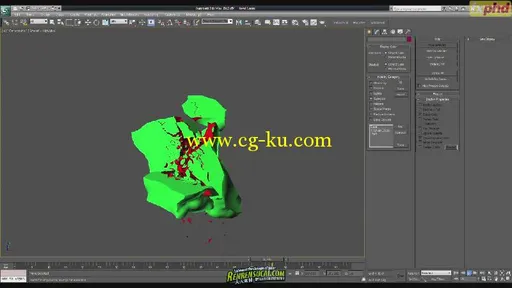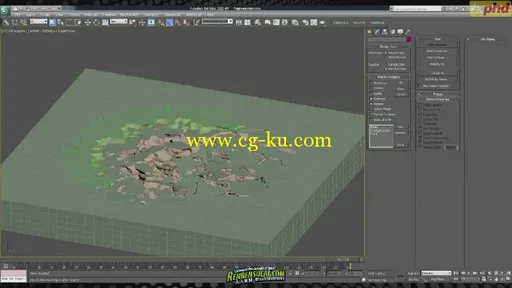本教程是由FXPHD机构出品的3dsmax粉碎塌陷高阶教程,时长:3小时50分,教程使用软件:3dsmax,大小:1.13 GB,MP4视频格式,附工程源文件,作者:Hristo Velev,语言:英语。
3D Studio Max,常简称为3ds Max或MAX,是Autodesk公司开发的基于PC系统的三维动画渲染和制作软件。其前身是基于****DOS操作系统的3D Studio系列软件,最新版本是2012。在Windows NT出现以前,工业级的CG制作被SGI图形工作站所垄断。3D Studio Max + Windows NT组合的出现一下子降低了CG制作的门槛,首选开始运用在电脑游戏中的动画制作,后更进一步开始参与影视片的特效制作,例如X战警II,最后的武士等。
FXPHD MAX203 3DS Max Destruction Techniques
In this course, Hristo Velev will introduce you to the rich intricacies of creating a feature film level effects shot, in the challenging scenario of earthquake style ground collapse. We'll go all the way from planning and sharing experience through detailed multi level rigid body sims, volumetrics, debris secondaries, and to assembling and rendering everything that would make for happy. We'll employ 3DS Max, Thinking Particles, Rayfire and FumeFX in a process shaped by experience and efficiency.
Class 1: We start with an overview of the project, the goals of the course and the ideas behind it. Then we get to planning it - analyzing the project, laying out all the steps towards the end result and the thought process behind them.
Class 2: Dealing with with the primary cut of the big earth pieces and building a system to animate them in Thinking Particles. Good fragmentation practices, setting up useful animation controls and versioning the animation get covered.
Class 3: We use the main animation we have prepared and cut the pieces once more, to get detail on the edges. Then we look at implementing the second level simulation on top of the first level one, retaining the underlying motions and adding detail.
Class 4: Working on the third level simulation, where fragments are small enough so we can use procedural fragmentation with VolumeBreaker. We set up some useful rules on fragmentation and activation, introducing one more level of detail.
Class 5: With the base simulation done, we'll cover replacing the big pieces with separate sims - cutting and simulating each independently, to increase the detail and get a sense of scale.
Class 6: At this point we shift from rigid bodies to volumetrics, starting up with dust clouds. We'll use the prepared rigid body sim at the appropriate level and generate particle sources to feed into a FumeFX simulation of dust clouds rising up.
Class 7: Continuing with dust, this class shows how to add two types of dust trails on the falling rigid bodies. The strategical questions of arranging volumetrics are taken care of.
Class 8: Augmenting the rigid body simulation with simple particle debris. Again, we produce several elements, starting with splashes, and we're composing them so they play nicely with the rigid bodies and the volumetrics.
Class 9: A second type of debris element - a trail - is added. After that, some special attention is directed towards the options offered by post cache operations.
Class 10: The last lesson brings all the elements we've produced together for inspection and rendering. We'll build up the necessary scene assemblies, and then set up the necessary render passes to be sent to compositing.



发布日期: 2012-5-25